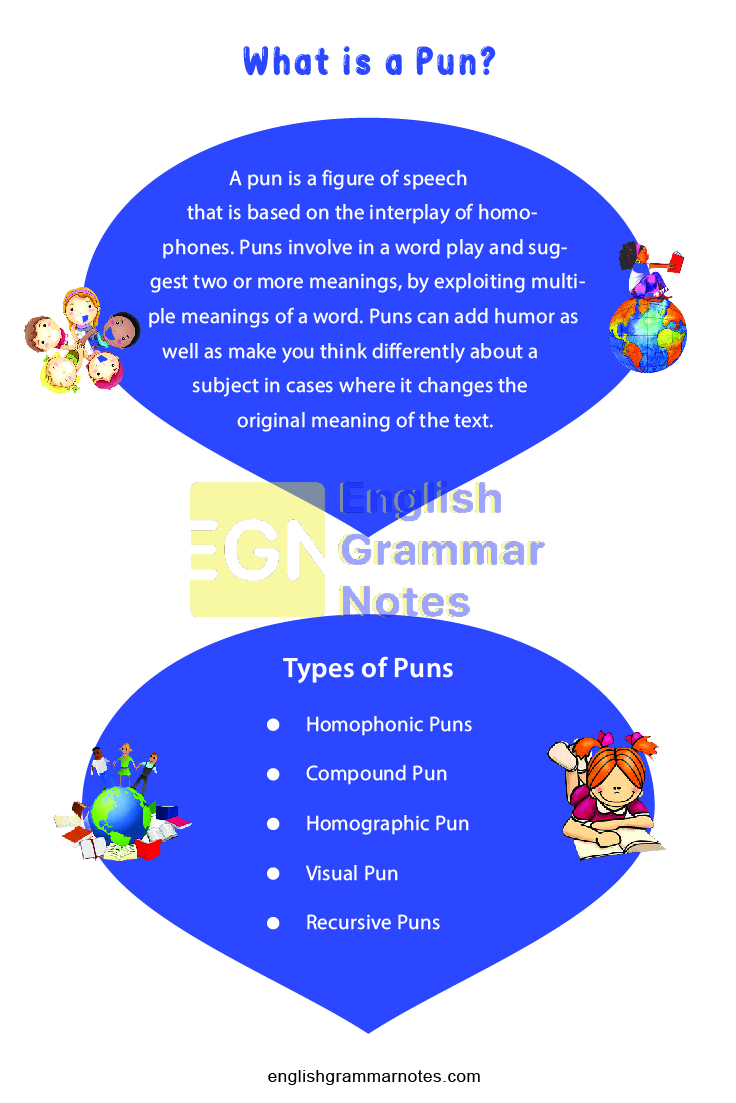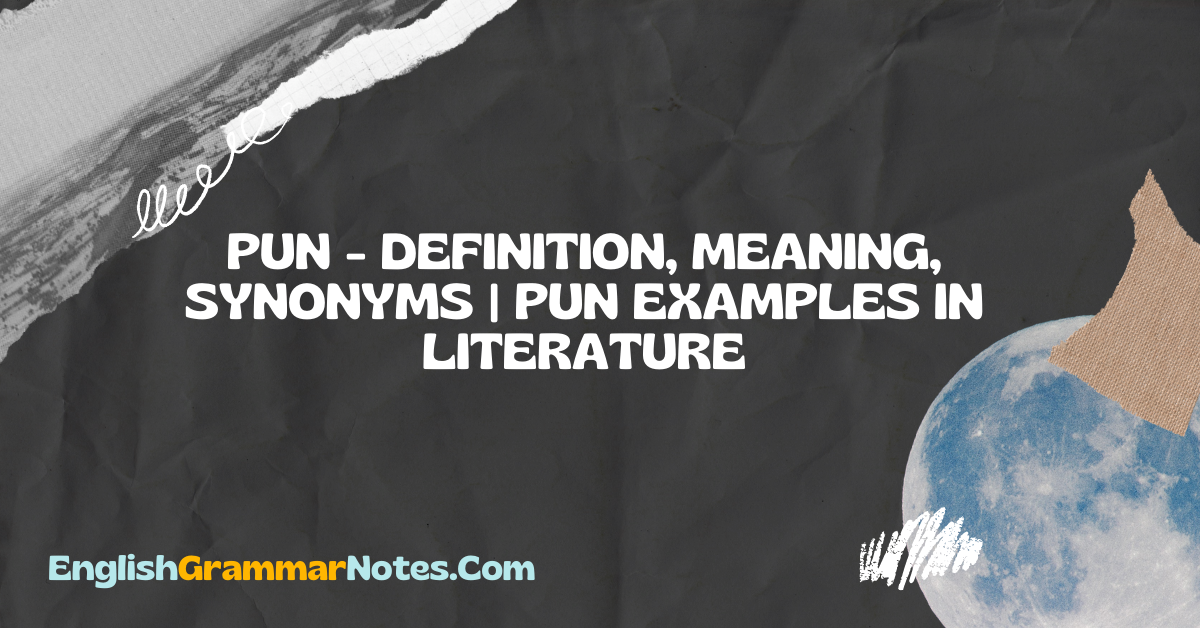Puns are a figure of speech that has many uses both in everyday conversation as well as in writing. Puns can be used to achieve a humorous effect in a piece of writing. A pun is known as “paronomasia,” and has its roots in the Greek word “paronomazein,” which means to make a change in a name. Some of the synonyms of puns include wordplay, witticism, double meaning, innuendo, quip, double entendre, and quibble. Today let’s have a look at what puns are, their function, common examples, etc.
- What is a Pun?
- Pun Examples
- Types of Puns
- Tips for making a Pun
- Purpose of Puns
- Pun Vs Joke
- Intended and Unintended Puns
- FAQs on Puns
What is a Pun?
A pun is a figure of speech that is based on the interplay of homophones. Puns involve in a word play and suggest two or more meanings, by exploiting multiple meanings of a word. Puns can add humor as well as make you think differently about a subject in cases where it changes the original meaning of the text. The humor comes from the confusion between the two meanings.
Pun Examples
Given below are some of the commonly seen puns in everyday expression:
- The cat is near the computer and has its eye on the mouse.
- It’s not simple to love musicians as they are very upbeat.
- If you are by the window, I’ll help you out.
- The population of Ireland is always Dublin.
- It’s very though for crabs to share as they are shellfish.
- Give me the newspaper so we don’t have crosswords.
- The skeleton model in our biology class is a bonehead.
- The wedding cake had me in tiers.
- When my algebra teacher retired, he wasn’t ready to face the aftermath.
- Some bunny loves you.
- As I have graph paper, it’s time to plot something.
- Make like a tree and leave.
- This candy cane is in mint condition.
- My librarian is a great bookkeeper.
- This vacuum sucks.
- I like archery, but it’s very difficult to see the point.
See More:
Types of Puns
Puns can be classified into different types based on their effect. Given below are five different types of puns:
- Homophonic Puns: This pun makes use of paired homonyms that are words that sound the same but have different meanings.
- Compound Pun: Compound pun consists of more than one pun in the same sentence.
- Homographic Pun: also known as a heteronymic pun. These puns play on words that have the same spelling but have a double meaning.
- Visual Pun: Visual puns can be achieved through imagery, graphics, or logos.
- Recursive Puns: This pun is a two-part pun. You have to recognize or understand the first part of the pun to grasp the meaning of the second part.

Tips for making a Pun
Given below are some tips that can help you create a good pun:
- Have an idea of the different types of puns.
- Be clear with the confusing grammatical rules.
- Link words or phrases with similar meaning
- Build your vocabulary which would in turn help you to make connections between words and create puns.
- The use of a rhyming dictionary can help you discover words for puns.
Purpose of Puns
Puns are often employed for the following reasons:
- The main function of a pun is to invoke laughter in the readers.
- Adds humour to what you write or say
- Puns can also change the meaning of an idea or phrase.
Pun Vs Joke
People often use the terms puns and joke interchangeably. However, both these techniques are different from each other. Puns are figures of speech that engage in a kind of wordplay, whereas jokes are narrative structures that are used to create humor and laughter.
Intended and Unintended Puns
Authors and characters make use of words in some contexts which can have several meanings but the readers mostly deduce the meanings which the pun does not originally mean. This is known as unintended use puns or it is called a pun unintended. However, at other times, puns may be used intentionally to create laughter in the readers. Such use of puns is known as intended puns.
Explore more literary devices and get a command over your language and become a pro in writing.
FAQs on Puns
1) What are puns?
A pun is a figure of speech that is based on the interplay of homophones. Puns involve in a word play and suggest two or more meanings, by exploiting multiple meanings of a word.
2. Give examples of puns?
Some common examples of puns include: Make like a tree and leave, This candy cane is in mint condition, My librarian is a great bookkeeper, This vacuum sucks.
3. What are the different types of puns?
The five different types of puns include homophonic puns, compound puns, visual puns, recursive puns, and homographic puns.
4. What are the benefits of using a pun?
The use of puns can invoke laughter in the readers. Puns can also change the meaning of an idea or phrase.
Conclusion
Puns are not just figures of speech employed to make the readers laugh, they can often make readers pause and consider what they have read from a different angle. This would in turn help them to appreciate your talent and grasp your language. Puns have been used for a long time to entertain readers and make reading more interesting.
